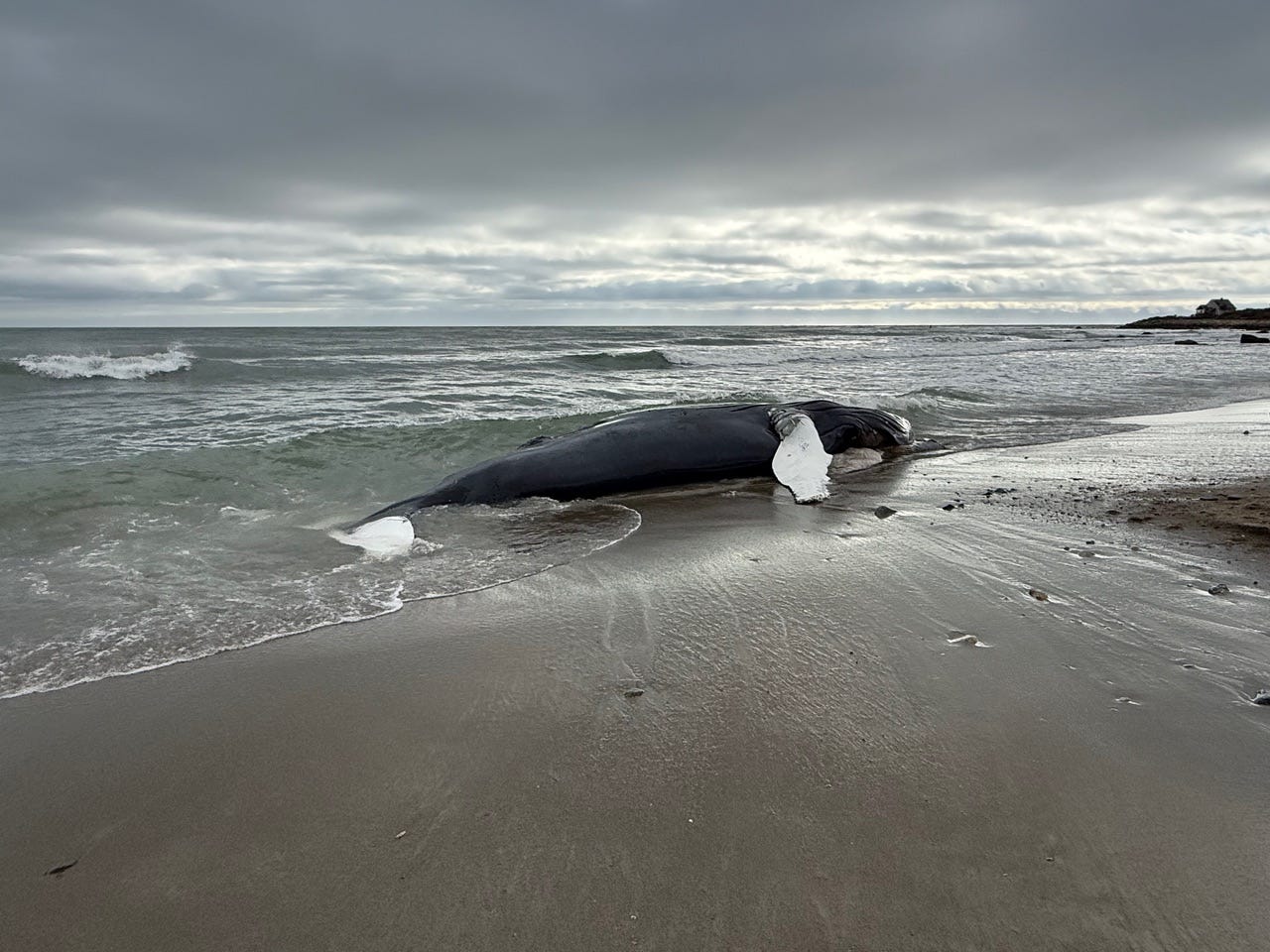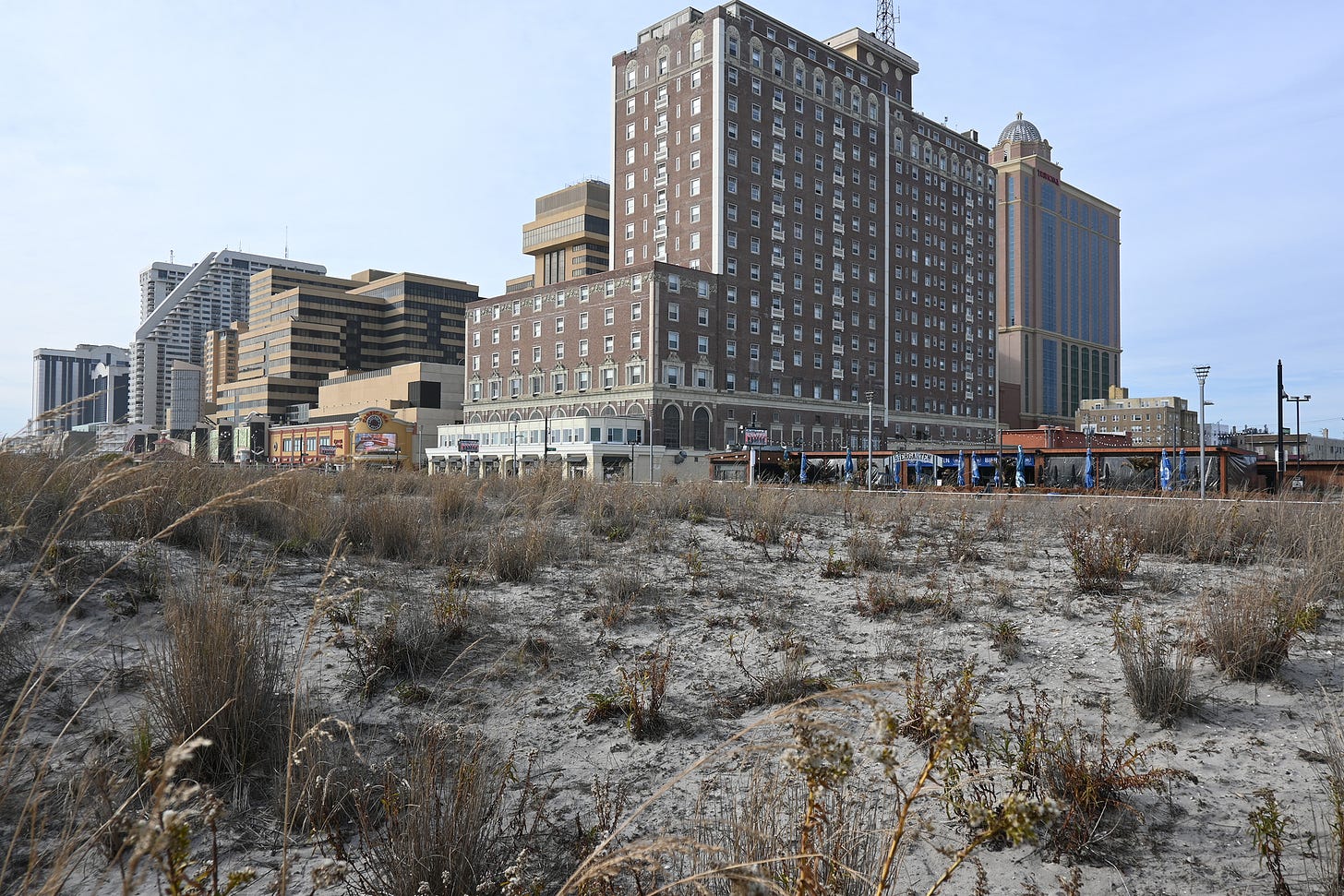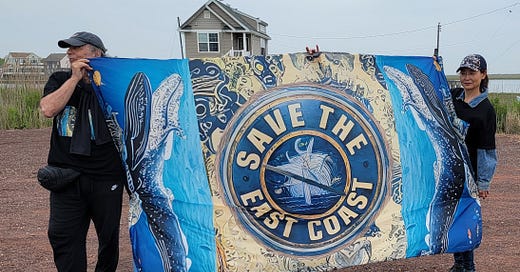Could This Be the Fastest Way to Stop the Atlantic Shores Offshore Wind Project?
On Jan. 1, an authorization went into effect allowing the company to torment over 20,000 marine mammals. Might a clause in that very same document be used to halt the whole scheme and others like it?
When pressed about offshore wind projects at his Senate confirmation hearing last week, Doug Burgum, the former North Dakota governor who was tapped to lead the Department of Interior said, “…if they make sense and they are already in law, they’ll continue…”
Bergum, who is expected to be confirmed as the head honcho of the umbrella agency for the two lead bureaus in charge of offshore wind (BOEM and BSEE) was questioned by turbine enthusiast Sen. Angus King (I-Maine) who used the opportunity to put in a good word for his pet project, a devasting plan to develop offshore wind in the Gulf of Maine.
Even though offshore wind is no longer the done deal it was under Biden, it’s unlikely the eight fully permitted projects (which include New Jersey’s Atlantic Shores South) will be abandoned without a fight. The executive order outlining the Trump administration's immediate plans for offshore wind calls for a “temporary” halt on the issuance of new leases and permits, and a “comprehensive review” looking for legalities that could “terminate” or “amend” current leases.
A permit to pursue, torment, and annoy
On Jan. 1, 2025, a Letter of Authorization (LOA) issued to the Atlantic Shores South project went into effect allowing the “take”* of a mindboggling 20,976 marine mammals over five years. This document, which allows for the “torment” of whales, dolphins, porpoises, and seals is pivotal for the company to proceed with construction.
Those five years are meant to cover the project’s installation, which includes “impact pile driving” of up to 200 wind turbines as close as 8.7 miles to the New Jersey coastline, up to 10 offshore substations, the trenching, laying, and burying of cable for export routes and the installation and removal of up to eight cofferdams. (A cofferdam is an enclosure built within a body of water to create a dry working area.)
Permission to torture marine life is curiously allowed under the Marine Mammal Protection Act, which grants – with the proper paperwork -- the right to conduct “any act of pursuit, torment, or annoyance which has the potential to disturb a marine mammal or marine mammal stock in the wild.”
Through its statistical wizardry and scientific hocus-pocus, however, the National Oceanic and Atmospheric Administration, National Marine Fisheries Service, a.k.a. NOAA Fisheries (which issues such authorizations) has determined that Atlantic Shores “take” requests are of “small numbers,” will result in “a negligible impact on marine mammal stocks,” and that no “mortality or serious injury of any marine mammal is anticipated…”

The “more than a negligible impact” clause
Is it possible that Atlantic Shores could be stopped with a common-sense interpretation of Part 2, section (b) in that all-important Letter of Authorization? It states that NOAA Fisheries “…shall withdraw or suspend this authorization to take marine mammals…if it finds that…(b) The taking authorized in this LOA is having, or may have, more than a negligible impact on an affected species or stock.”
While it’s shocking to realize that the construction of this one project alone is expected to harass and potentially deafen over 8,000 bottlenose dolphins, and hundreds of whales – including humpbacks, minkes, and sperm whales – it’s those “takes” for species “protected” under the Endangered Species Act** that might have the power to revoke this LOA, making Atlantic Shores effectively dead in the water.
And that would be especially true when it comes to the North Atlantic right whale (NARW).
With total population numbers currently estimated at below 340, and only 70 or so reproductively active females, it would seem logical that any potential disruption of the remaining few hundred swimming between existence and extinction would be a deal breaker.
The group Save LBI gave a detailed analysis of dangers to the NARW in its substantial comments to NOAA Fisheries in Oct. 2023 objecting to the issuance of the currently active LOA. The group outlined how, under the terms of the LOA, Atlantic Shores can’t comply with the Marine Mammal Protection Act (MMPA), how construction and operational noise would cause the NARW to exceed its “biological removal rate,” and how the project “would potentially block NARW migration across its historic dominant migration corridor.”
A biological removal rate, is the maximum number that can be “removed (as a result of death or serious injury) from a marine mammal stock” and still have a sustainable population. That number was “set” by the MMPA at less than one North Atlantic right whale a year.
You don’t need a degree in marine biology to realize that official authorization for Atlantic Shores to pursue, torment, and annoy 25 of these seriously endangered mammals, as permitted in its LOA, can send them over the tipping point.
And that’s just one “take” authorization out of many, especially for offshore wind areas currently under construction off the coasts of Massachusetts and Rhode Island (see Offshore Wind—a New Way of Whaling).
Could every issued LOA be revoked for this same reason?
Meanwhile, in Atlantic City…
The legendary seaside resort of Atlantic City was selected to be the dumping ground for Atlantic Shores South high-voltage export cables, a plan approved by the city council in a 5-4 vote on Dec. 18.
Coming ashore at the beach and boardwalk right next to the 104-year-old Ritz Condominium and meandering underground through a large swath of ancient infrastructure, the high-voltage cables are then planned to travel another 14 miles to the Cardiff substation in Egg Harbor Township. (For more details see Will Atlantic City Survive Offshore Wind?)

In a remarkable grassroots effort, however, Atlantic City residents managed to put a freeze on the plan by collecting 2092 signatures on a petition received and certified by the city clerk.
What’s next is the big question.
The petition should put the ordinance -- a construction agreement between the city and Atlantic Shores – up for referendum. But New Jersey holds a wild card over this casino town. Control of Atlantic City was taken over by the state in 2016 under the Municipal Stabilization and Recovery Act, something renewed by Governor Murphy in 2021 for another five years.
There’s also the little problem of another 2021 action by the state allowing it to bigfoot over a city or county that won’t give a right-of-way to offshore wind developers. In that case, the State Board of Public Utilities would make the ultimate decision.
* A “take” is defined as activities that “harass, hunt, capture, or kill, or attempt to harass, hunt, capture, or kill any marine mammal.”
** There are four marine mammals listed in the Endangered Species Act included in the Atlantic Shores Letter of Authorization – the North Atlantic right whale, fin, sei, and sperm whales.





Thank you so much for writing about this. I feel like so many people have pushed this issue aside and it is still a very serious problem that needs to be dealt with.